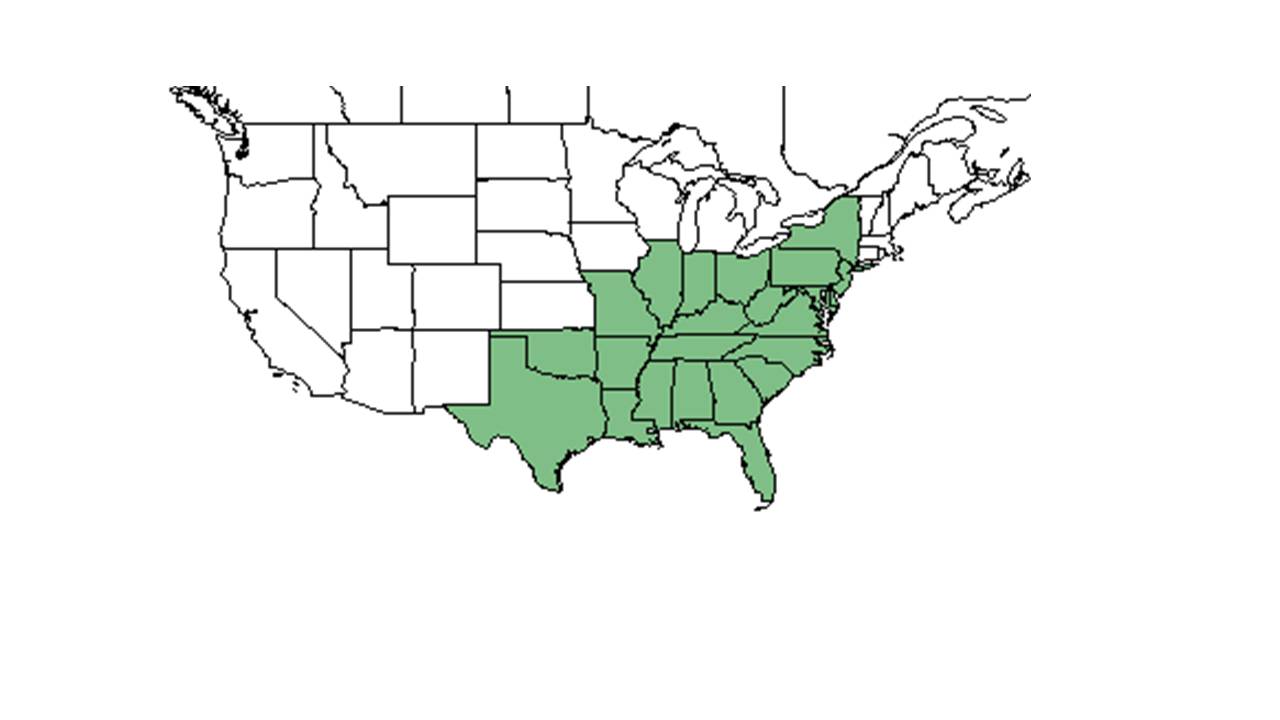Difference between revisions of "Desmodium laevigatum"
KatieMccoy (talk | contribs) |
KatieMccoy (talk | contribs) |
||
| Line 35: | Line 35: | ||
===Phenology=== <!--Timing off flowering, fruiting, seed dispersal, and environmental triggers. Cite PanFlora website if appropriate: http://www.gilnelson.com/PanFlora/ --> | ===Phenology=== <!--Timing off flowering, fruiting, seed dispersal, and environmental triggers. Cite PanFlora website if appropriate: http://www.gilnelson.com/PanFlora/ --> | ||
| − | It has been observed flowering and fruiting from September to November | + | It has been observed flowering and fruiting from September to November<ref name=fsu/>. |
<!--===Seed dispersal===--> | <!--===Seed dispersal===--> | ||
| Line 43: | Line 43: | ||
<!--===Use by animals===--> <!--Herbivory, granivory, insect hosting, etc.--> | <!--===Use by animals===--> <!--Herbivory, granivory, insect hosting, etc.--> | ||
<!--===Diseases and parasites===--> | <!--===Diseases and parasites===--> | ||
| + | |||
==Conservation and Management== | ==Conservation and Management== | ||
==Cultivation and restoration== | ==Cultivation and restoration== | ||
Revision as of 08:36, 19 April 2016
| Desmodium laevigatum | |
|---|---|

| |
| Photo taken by Kevin Robertson | |
| Scientific classification | |
| Kingdom: | Plantae |
| Division: | Magnoliophyta - Flowering plants |
| Class: | Magnoliopsida – Dicotyledons |
| Order: | Fabales |
| Family: | Fabaceae ⁄ Leguminosae |
| Genus: | Desmodium |
| Species: | D. laevigatum |
| Binomial name | |
| Desmodium laevigatum (Nutt.) DC. | |

| |
| Natural range of Desmodium laevigatum from USDA NRCS Plants Database. | |
Common name: Smooth ticktrefoil
Contents
Taxonomic notes
Synonym: Meibomia laevigata (Nuttall) Kuntze
Description
Generally for the Desmodium genus, they are "annual or perennial herbs, shrubs or small trees. Leaves 1-5 foliolate, pinnately 3-foliolate in ours or rarely the uppermost or lowermost 1-foliolate; leaflets entire, usually stipellate; stipules caduceus to persistent, ovate to subulate, foliaceous to setaceous, often striate. Inflorescence terminal and from the upper axils, paniculate or occasionally racemose; pedicel of each papilionaceous flower subtended by a secondary bract or bractlet, the cluster of 1-few flowers subtended by a primary bract. Calyx slightly to conspicuously 2-lipped, the upper lip scarcely bifid, the lower lip 3-dentate; petals pink, roseate, purple, bluish or white; stamens monadelphous or more commonly diadelphous and then 9 and 1. Legume a stipitate loment, the segments 2-many or rarely solitary, usually flattened and densely uncinated-pubescent, separating into 1-seeded, indehiscent segments." [1].
Specifically, for D. laevigatum species, they are "erect perennial; stems 0.5-1.2 m tall, glabrous to sparsely and inconspicuously uncinulate-puberulent. Terminal leaflets ovate to elliptic-ovate or elliptic-oblong, (3) 4-7 (9) cm long, glabrous to very sparsely puberulent above, glabrous to puberulent or sparsely short-pilose, often glaucous beneath with the trichomes largely restricted to the principal veins; stipules caduceus, lance-attenuate, 5-8 mm long; stipels persistent. Inflorescence usually paniculate, moderately to densely uncinulate-puberulent; pedicels mostly 7-19 mm long. Calyx densely puberulent; petals pink or roseate to purple, 8-10 mm long; stamens diadelphous. Loment of 2-5 subrhombic segments, each about 5-8 mm long, 3.5-5 mm broad, with a straight or slightly convex upper suture and an abruptly angled lower suture, with densely uncinulate sutures; stipe ca. 4.5-6.5 mm longer, much longer than the calyx tube but often equaling or even exceeding the calyx lobes, shorter than stamina remnants." [1].
Distribution
Ecology
Habitat
It is found in areas that frequently burn such as open woods bordering a bay, hardwood hammocks, upland pine, in open mixed pine-hardwood forest, well drained upland, savannas, turkey oak sand ridges. Requires low-high light levels. Is associated with loamy sand, sandy clay loam, limestone, and sand soil types[2].
Associated species include Desmodium ciliare, D. lineatum, D. glabellum[2].
Phenology
It has been observed flowering and fruiting from September to November[2].
Conservation and Management
Cultivation and restoration
Photo Gallery
References and notes
Florida State University Robert K. Godfrey Herbarium database. URL: http://herbarium.bio.fsu.edu. Last accessed: June 2014. Collectors: Loran C. Anderson, R.K. Godfrey, Angus Gholson, A. F. Clewell, V. Sullivan, J. Wooten, R. Kral, R. Komarek, T. MacClendon, - Boothes, Travis MacClendon, Karen MacClendon, Geo. Wilder, Harry E. Ahles, C. R. Bell, H. R. Reed, Delzie Demaree, William B. Fox, and S. G. Boyce. States and Counties: Alabama: Etowah, Franklin, and Lee. Arkansas: Drew. Florida: Bay, Calhoun, Franklin, Jackson, Jefferson, Leon, Liberty, Okaloosa,and Wakulla. Georgia: Baker, Decatur, Grady,and Thomas. Mississippi: Pearl River. North Carolina: Sampson. South Carolina: Beaufort. Virginia: Montgomery.
Radford, Albert E., Harry E. Ahles, and C. Ritchie Bell. Manual of the Vascular Flora of the Carolinas. 1964, 1968. The University of North Carolina Press. 604-11. Print.
- ↑ 1.0 1.1 Radford, Albert E., Harry E. Ahles, and C. Ritchie Bell. Manual of the Vascular Flora of the Carolinas. 1964, 1968. The University of North Carolina Press. 604-11. Print.
- ↑ 2.0 2.1 2.2 Florida State University Robert K. Godfrey Herbarium database. URL: http://herbarium.bio.fsu.edu. Last accessed: June 2014. Collectors: Loran C. Anderson, R.K. Godfrey, Angus Gholson, A. F. Clewell, V. Sullivan, J. Wooten, R. Kral, R. Komarek, T. MacClendon, - Boothes, Travis MacClendon, Karen MacClendon, Geo. Wilder, Harry E. Ahles, C. R. Bell, H. R. Reed, Delzie Demaree, William B. Fox, and S. G. Boyce. States and Counties: Alabama: Etowah, Franklin, and Lee. Arkansas: Drew. Florida: Bay, Calhoun, Franklin, Jackson, Jefferson, Leon, Liberty, Okaloosa,and Wakulla. Georgia: Baker, Decatur, Grady,and Thomas. Mississippi: Pearl River. North Carolina: Sampson. South Carolina: Beaufort. Virginia: Montgomery.